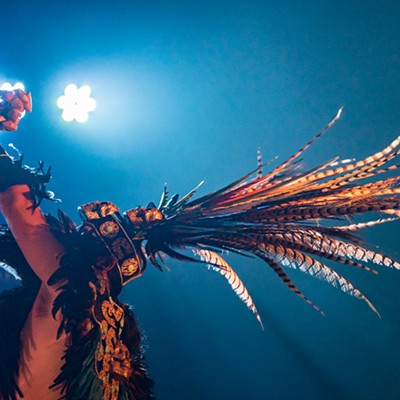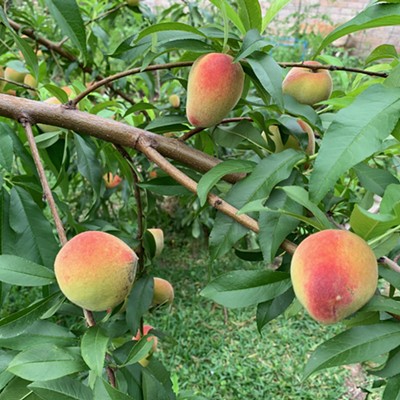The Texas State Aquarium is one of the top aquariums in the country, but the tank that holds the small sharks people are allowed to touch could use some work. So they've partnered with the Houston Museum of Natural Science in order to beta test a new set-up for the seven months Shark! will be running open to the public.
There are two circular tanks measuring 9 feet in diameter and containing 700 gallons of water. The sharks in the exhibit are smaller species that do not need to keep moving to breathe, are bred in captivity, and have mouth positions that make biting a hand from above more difficult. Small as they are, though, there is still a huge thrill in petting a shark.
The first species is the whitespotted bamboo shark. They measure about a foot and a half from nose to tail and tend to be shy. One of the attendants was kind enough to actually move a hiding place so I could get a better look at the animal. The distinctive large white spots on their backs are used for defense against bigger fish that would prey on them as they look like large eyes that indicate a much bigger animal.
It was weird to find out that sharks have predators. I've just never even considered that no matter how many times I've watched that video of the giant grouper eating a shark in one bite. Stuff like that just seems like isolated instances of man bites dog, but running two fingers over the spots on the backs of the sharks pretty much proves that evolution doesn't really care what your misconceptions are.
The other sharks available for pet-pets are epaulette carpet sharks, which are a little less colorful and about 50 percent larger. There are four or five of them in the tank, including a hyper energetic male that does laps along the wall at full speed all day. The more sedate females are larger and tend to rest within easy petting distance.
Turns out the male is energetic in more ways than one. The largest female surprisingly laid eggs last week, and the two of them are currently resting in a special hold in the water while the staff waits to see if they are viable. If so, expect them to hatch around four months from now.
Though the touch tanks are easily the most entertaining part of the exhibit there are some other neat supplements. A shark cage sits outside the exhibit proper, and is flanked on three sides by a projection of an ocean being patrolled by a large hammerhead. It's silly, but once you're standing inside the tank the effect is actually a little frightening.
There are great white and megalodon jaws on display because no celebration of sharks is complete without a gaping maw of the mighty megalodon. A life-sized sculpture of a great white sits dead center, and there are two stations where you can look up actual tracking data on sharks in the Gulf of Mexico in real-time.
We kill sharks at such an unfair rate it's barely believable. All my life I've heard how many sharks are killed for their fins to be made into shark fin soup. I've heard it, but I've never heard the numbers. It's done in the hundreds of millions and has placed many species on the endangered list. And why? Because it's a delicacy seen as a status symbol and quacks use it in folk medicine.
In fact, one of the information placards lists facts about shark finning and goes out of its way to remark on the folk medicine benefits as being "not proven". I'm pretty sure that's the closest I've ever seen a museum come to calling something bullshit.
Sharks remain misunderstood, something that's not really helped by the endless parade of bad monster movies and the producers of Shark Week apparently going off the deep end, if you'll pardon the pun. This new exhibit may be a fairly modest engagement in scope, but it makes up for it by keeping the message simple. We need to stop fearing sharks when we're the ones marching them toward extinction every day.






